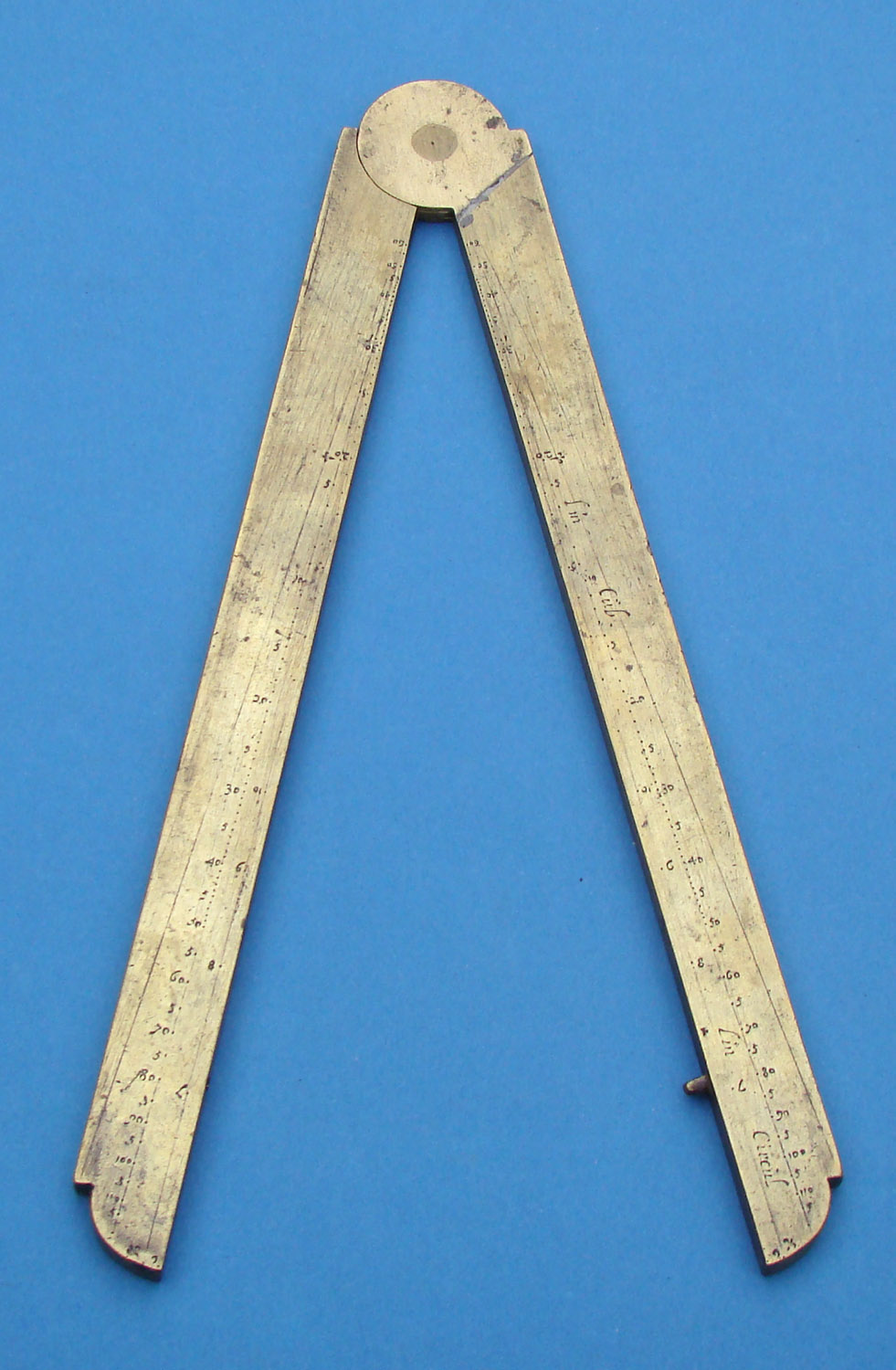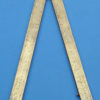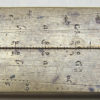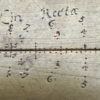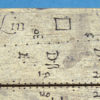Description
A MUSICAL SECTOR, German or Italian, c. late 17th century, made of brass, reverse tapered in thickness, opening from 7-1/2″ to 14-1/8″ (19 to 36 cm). One side is finely divided with twin sector scales of equal parts (each scale divided twice 0(1)100; i.e., from 0 to 100 by ones), of “Lin Recta” 15(1)2, of “Lin ‘square'” 0(1)60(5)90, and of a wonderful musical scale “fi, G, G-is, a, b, h, C, C-is, D, D-is, E, f.” The other has twin sector scales of “Lin Cub” 1(1)50(5)120 and “Lin Circul” 60(5)45(1)6, noting a couple of tiny terminal fleur-de-lis marks . Condition is good with general surface wear.
This interesting sector has standard scales for computing distances, areas, etc. But it also has a musical scale of 12 notes, spaced nonlinearly and representing the differences in pitch. It is specifically German nomenclature, distinguished by the “-is” abbreviation sign (engraved here somewhat like the Greek beta) meaning “sharp”, the “b” for B-flat, and the zigzag-h for B-natural (Jeffrey Dean, 2012; and see W. Apel, 1949, The Notation of Polyphonic Music, 900-1600). Such a musical scale can have many uses in the design and construction of instruments, for example calculation of lengths of lute strings or organ pipes, of string gauges or tensions, or even of bell diameters. The only other musical sector scales we have found are on very large German sectors (e.g. see R. de Pecker, 2007, and a particularly fine example at Oxford).
Ask the Dealer
Dealer information
 TESSERACT
TESSERACT
David and Yola Coffeen both have enjoyed academic careers, as planetary astronomer and as linguist/educator. But since 1982 (yes, 1982!) they have been full-time dealers in early scientific and medical instruments, under the name Tesseract. Selling primarily by catalogue (over 100 issued so far) they also have a web presence at www.etesseract.com, and can be contacted at [email protected].




